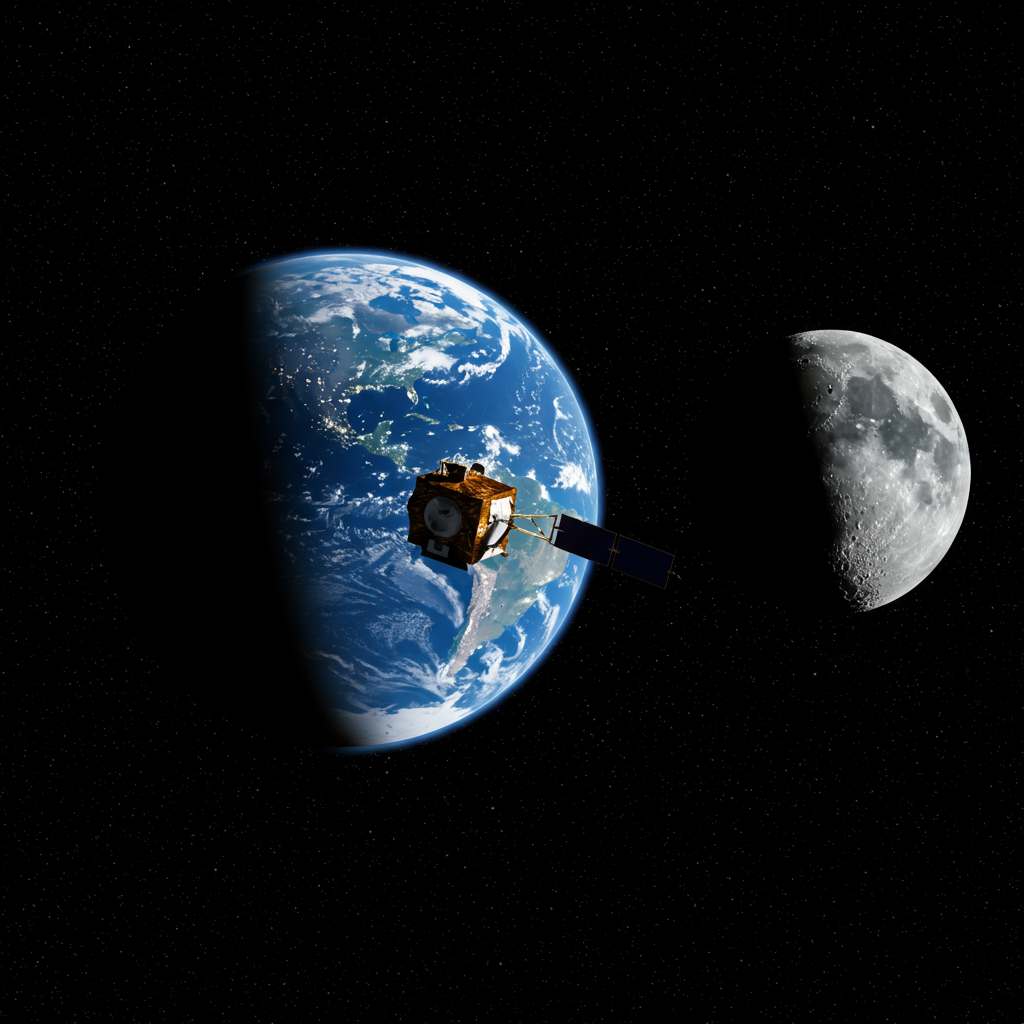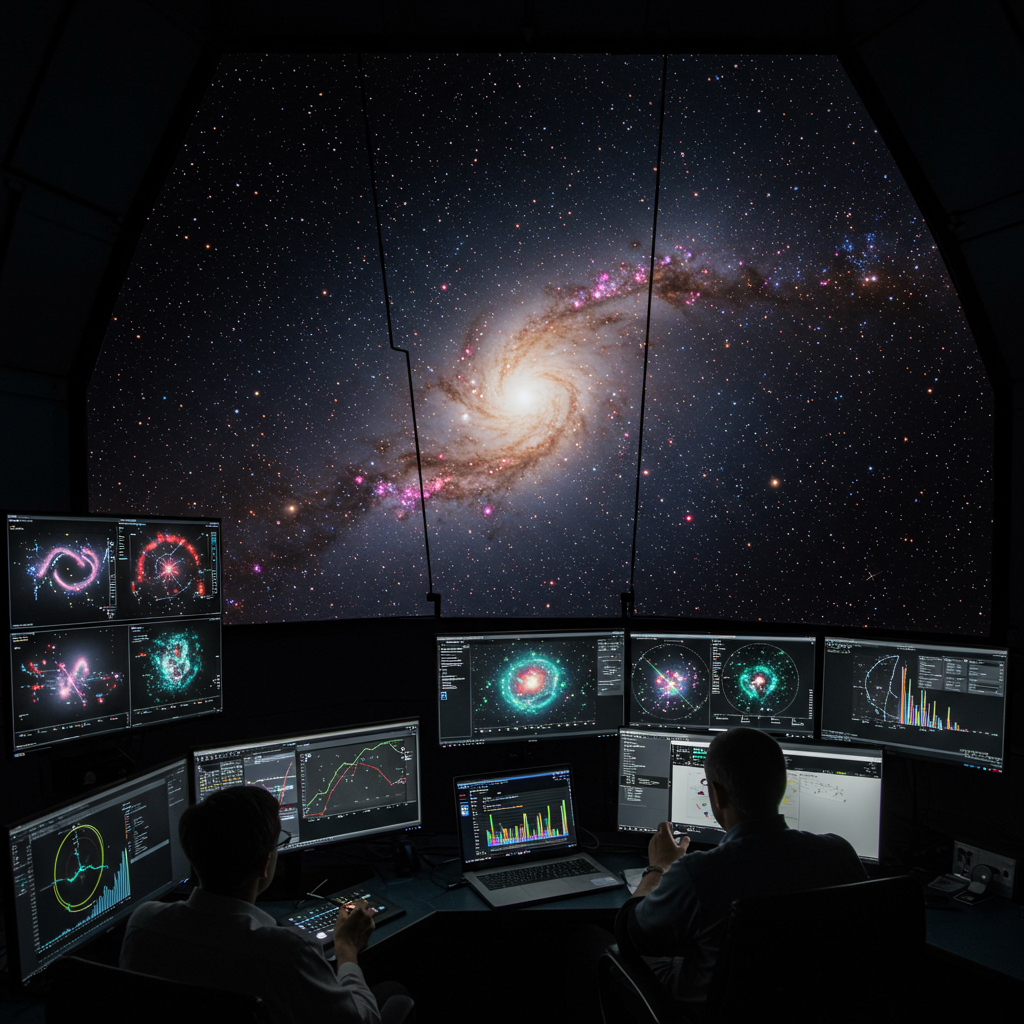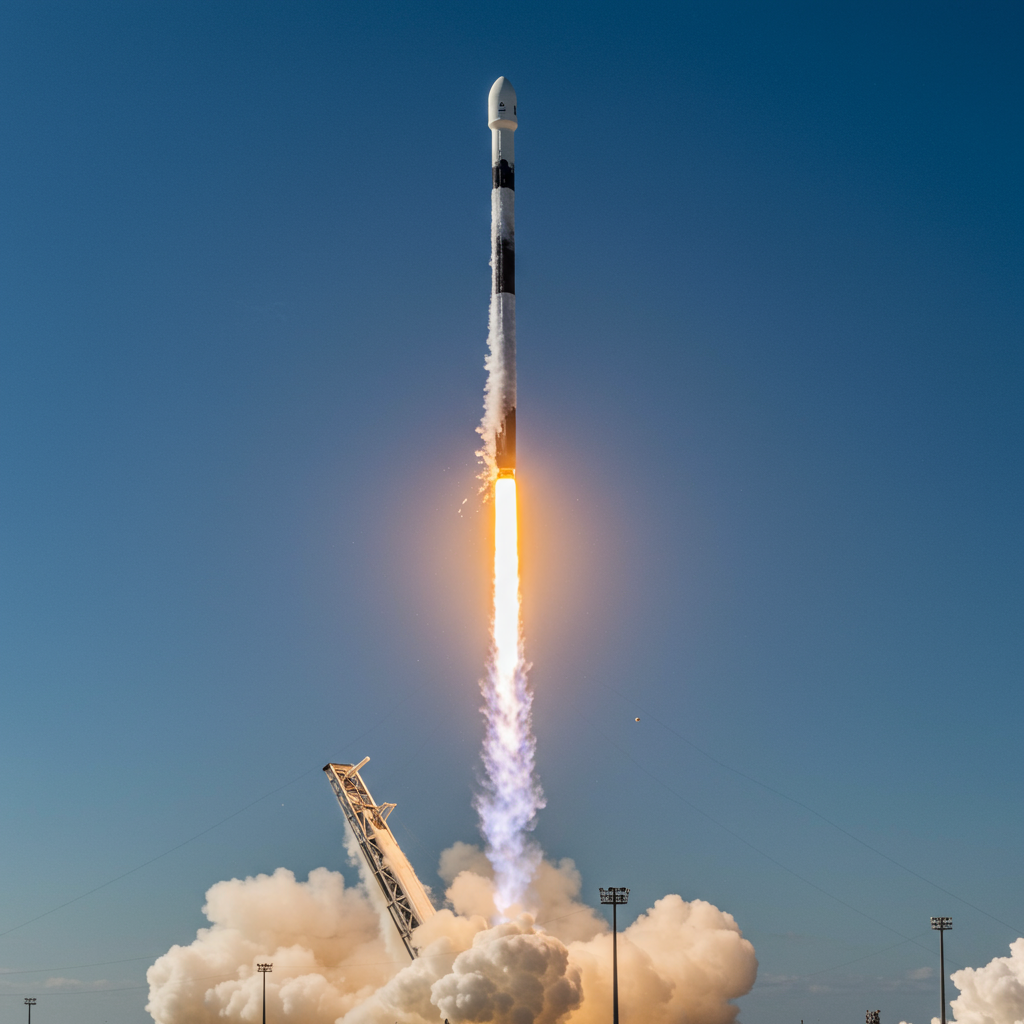In a significant update from China’s ambitious deep space exploration program, the China National Space Administration (CNSA) has released striking new images. These photographs capture views of both Earth and the Moon as seen by the tianwen-2 probe. The release provides an early validation of the spacecraft’s critical imaging and navigation systems. It underscores China’s growing capabilities far beyond Earth orbit.
The images were officially announced by the CNSA on July 1, 2025. They were taken just a day after the probe’s launch. Specifically, the images were captured on May 30, 2025. This happened as the Tianwen-2 probe began its long journey.
First Glimpse from Deep Space
The newly released images offer a unique perspective of our home planet and its closest celestial neighbor. Both the Earth and Moon were photographed from a considerable distance. At the time the images were taken, the Tianwen-2 probe was approximately 590,000 kilometers (about 367,000 miles) away.
The image of Earth was captured around 1 pm Beijing time on May 30. The moon image followed later the same day, around 3 pm. These raw images were transmitted back to ground stations on Earth. Scientific researchers then processed them. The resulting photographs demonstrate the clarity and performance of the onboard equipment.
The specific instrument used for capturing these early images is the probe’s narrow-field-of-view navigation sensor. This sensor is not just for pretty pictures. It’s a vital piece of technology. Its primary role is to maintain the spacecraft’s orientation. It also enables precise, autonomous navigation in the vastness of deep space.
Validating Critical Technology
The successful capture and transmission of these images serve a crucial technical purpose. They provide early proof of the reliability and stability of the probe’s imaging system. Furthermore, they validate the information link connecting the spacecraft back to Earth.
Senior space experts have highlighted this significance. They note that proving the functional performance of the navigation sensor is a critical step. It confirms that key systems are operating as expected. This early validation is essential for the complex mission ahead.
As of the July 1 announcement, the Tianwen-2 probe had been in orbit for over 33 days. It had already traveled a distance exceeding 12 million kilometers (about 7.5 million miles) from Earth. The CNSA confirmed the probe was in “good working condition.” This smooth initial phase bodes well for the challenges that lie ahead on its decade-long journey.
The Ambitious Tianwen-2 Mission
Tianwen-2 represents China’s first mission specifically focused on asteroid sampling and return. It was launched aboard a Long March-3B carrier rocket. The launch took place from the Xichang Satellite Launch Center on May 29, 2025. This mission is exceptionally ambitious in its scope and duration.
The mission has a planned duration of over 10 years. It involves a multi-target exploration strategy. The primary objective is to visit a specific near-Earth asteroid. Following the asteroid phase, the probe will travel much farther to explore a main-belt comet.
This dual-phase approach sets Tianwen-2 apart. It combines tasks typically handled by separate missions. It demands sophisticated engineering and meticulous planning.
Targeting Asteroid 2016HO3
The initial and primary target for Tianwen-2 is the near-Earth asteroid 2016HO3. This small asteroid holds particular scientific interest. It is hypothesized by some scientists to be a fragment of our own Moon. It could have been ejected into space during an ancient impact event.
The probe is expected to reach 2016HO3 in 2026. Upon arrival, Tianwen-2 will conduct detailed investigations. These include surface imaging and mapping. It will also analyze the asteroid’s material composition.
The most critical phase at 2016HO3 involves sample collection. The Tianwen-2 project team has developed innovative approaches for sampling small celestial bodies. These include standard “touch-and-go,” hovering, and attachment sampling methods. The aim is to collect precious surface and subsurface samples. These samples are planned for return to Earth.
The return capsule carrying the asteroid samples is scheduled to land back on Earth around the year 2027. Returning samples from a distant celestial body is a major technological feat. These samples could provide researchers with untouched material. This material might offer invaluable insights into the Moon’s ancient past. It could also shed light on the conditions of the early solar system.
Exploring Comet 311P
After successfully collecting samples and deploying the return capsule, the Tianwen-2 probe will continue its journey. Its extended mission will take it to the main asteroid belt. This region is located between Mars and Jupiter.
The secondary target is the main-belt comet 311P/PANSTARRS. This comet is known for having an active tail. It exhibits mysterious dust ejection phenomena. The exploration phase at 311P is planned around 2034.
Studying a comet like 311P could provide critical clues. Comets are often considered icy leftovers from the solar system’s formation. Scientists anticipate that studying 311P’s nucleus, gas, and dust activity could yield insights into the origin of Earth’s water and organic molecules. These are fundamental ingredients for life as we know it. Analyzing comet composition helps address the long-standing scientific question of how these components arrived on our planet.
Technology Enabling Deep Space Success
The capability to execute such a complex, multi-target mission relies on advanced technology. The narrow-field-of-view navigation sensor, already validated by the Earth and Moon images, is key for precise maneuvering and targeting.
Powering a probe far from the sun is another challenge. The Tianwen-2 probe features circular solar panels. An earlier image released by CNSA on June 6 showed their successful deployment. These panels are critical for meeting power supply requirements. This is especially true during the later phase of the mission. Comet 311P is located approximately 375 million kilometers from the Sun. This is significantly farther out than Mars.
The development of multiple sampling methods for small bodies also highlights technological innovation. This flexibility increases the chances of successful sample collection from potentially irregular or challenging surfaces.
Tianwen-2 in China’s Space Ambitions
The Tianwen-2 mission is a cornerstone of China’s broader “Tianwen” series. Named after an ancient poem, this series focuses on robotic interstellar exploration. The series builds upon the success of Tianwen-1. That mission launched in 2020 and achieved all objectives for Mars exploration in a single attempt: orbiting, landing, and rover deployment.
Tianwen-2 signifies a strategic effort by China. It aims to extend scientific exploration beyond the Moon and Mars. By targeting asteroids and comets, China is entering a domain traditionally dominated by other major space agencies like NASA, ESA, and JAXA.
This mission, alongside ongoing developments in robotic and potentially crewed space programs, showcases China’s ambition. It aims to become a global leader in space exploration. The release of high-quality images like those of Earth and the Moon serves as a public demonstration of this technological prowess. It reflects China’s growing capabilities in deep space. Related research, such as simulating autonomous robot operations in lunar lava tubes, also points to China’s long-term vision for exploring challenging space environments and establishing potential future habitats.
Frequently Asked Questions
Why are the recent Tianwen-2 probe images important?
The images of Earth and the Moon released by the CNSA are important because they validate the functionality of the Tianwen-2 probe’s narrow-field-of-view navigation sensor. This sensor is crucial for the probe’s autonomous navigation and precise movements throughout its decade-long mission, particularly during critical phases like asteroid sampling. Capturing clear images from 590,000 kilometers away demonstrates the reliability of the imaging and communication systems early in the mission.
What are the main scientific goals of China’s Tianwen-2 mission?
The Tianwen-2 mission has two primary scientific goals focused on small celestial bodies. First, it aims to collect samples from the near-Earth asteroid 2016HO3 and return them to Earth by 2027. Studying these samples could provide insights into the early solar system and potentially the origin of the Moon if 2016HO3 is confirmed to be a lunar fragment. Second, the mission will explore the main-belt comet 311P around 2034, seeking clues about the origin of water and organic molecules in the solar system.
How does the Tianwen-2 mission fit into China’s broader space exploration plans?
Tianwen-2 is part of China’s ambitious Tianwen series for robotic deep space exploration, following the successful Tianwen-1 Mars mission. This mission represents a significant step in China’s strategy to expand its exploration capabilities beyond the Moon and Mars. By targeting asteroids and comets with sample return and detailed observation, China is demonstrating advanced technological prowess and aiming to become a leading force in understanding the formation and evolution of the solar system, positioning itself alongside established global space powers.
Conclusion
The release of these stunning images from the Tianwen-2 probe marks a significant early milestone for China’s latest deep space endeavor. While visually captivating, the photos primarily serve as vital technical validation. They confirm that the spacecraft’s essential navigation and imaging systems are functioning effectively far from Earth. As Tianwen-2 continues its journey, validated by these initial results, it carries the potential to unlock profound secrets about the origins of our solar system, the Moon, water, and potentially life itself, solidifying China’s growing role in the global quest to understand the cosmos.
Word Count Check: ~1120 words




